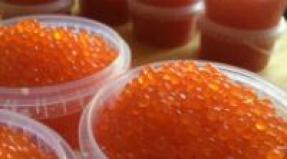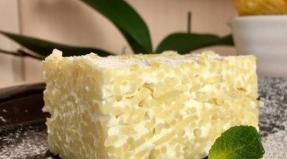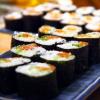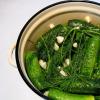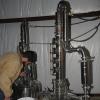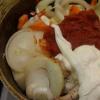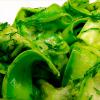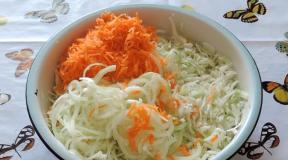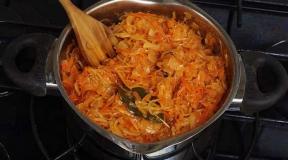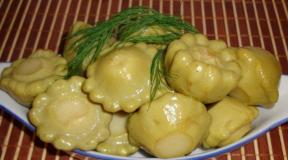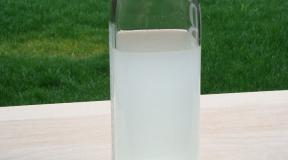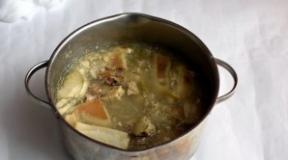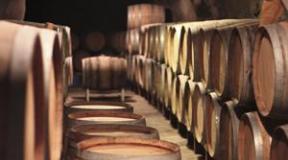Old drink ale. Irish red ale
Ale is one of the top-fermented beers. It is believed that the name comes from the word alu, which means "magical", "divine". This drink is really delicious and often has a sweetish aftertaste due to the addition of honey or caramel. The best ale is made in Belgium, Germany, Great Britain, Ireland.
What is ale
Elem is called top-fermented beer, in the production of which special "top-fermented" yeast is used. The ale contains prepared water, regular barley malt and brewer's yeast. After secondary fermentation, the ale is poured into steel containers, and in some places even in oak barrels, a little sugar is added and left to mature.
Due to the long calm maturation, the ale acquires a rich, balanced taste with many shades, in which the tones of dark fruits are clearly felt. In the aroma of ale, experts feel the shades of caramel, cherries, figs, cookies.
Differences between ale and beer
Until the 15th century, ale was called any product of brewing, then these two concepts began to be distinguished. Initially, hops were not used for the production of this drink, today the addition of hops is practiced everywhere.
Regular beer is bottom-fermented, while ale is top-fermented, an older method of fermentation. Secondary fermentation of ale takes place at an elevated temperature, on average 15-25 degrees. In the final stage, the yeast forms a kind of head on the surface of the ale. The entire secondary fermentation process lasts no more than 30 days. Unlike beer, the production technology does not provide for pasteurization and filtration. This significantly reduces the shelf life of the finished drink, but retains the maximum aroma and flavor.
Ale varieties and brands
Depending on the country of origin and national characteristics of production, American, Irish, Scottish, English, German and Belgian products are distinguished. By color, they are divided into three large groups:
- Pale Ale - light malt is used for its production, which gives the drink a light amber color. Hops and malt are on the palate. The strength is in the range of 3-20%.
- Brown Ale - Made from caramel malt. It has a dark brown color, rich, but soft taste with hints of nuts and dried fruits.
- Dark ale - burnt malt is used in the production, so the finished drink is almost black in color. Its strength is not necessarily higher than in the case of light ale.
The following ale varieties are distinguished by style:
- porter is a very dark drink with a characteristic bittersweet aftertaste;
- stout - dark beer with hints of coffee and chocolate in taste, the strength of which is 4-5%, for the imperial one - at least 7%;
- lambic is a tart beer fermented with wild yeast. Fruit lambics are especially popular: cherry, raspberry, peach, etc.
Trappist ales, which are brewed in monasteries according to old recipes, stand apart. Only seven breweries in the world have the right to call their drinks Trappist: this means that the entire production process takes place within the walls of the monastery, directly by the monks or under their strict control. They are produced mainly in Belgium, in very limited quantities, and therefore are incredibly appreciated by connoisseurs.
How to drink ale properly
Ale is drunk chilled to 10-12 degrees, at a higher temperature it loses all its attractiveness. Bars often serve a slice of lemon or orange to balance the sweetness to your liking. It is not customary to drink ale from large beer mugs, it is better to take tall beer glasses.
Pale ale is good as an aperitif and can be served with Thai dishes, salads and fish snacks. Brown and dark varieties are great digestifs, as well as companions for barbecues and hearty meat dishes. Lamb and duck go well with meat.
Ordinary beer snacks also do not spoil the taste of ale: it goes well with crackers, croutons, and nuts. Cheddar is the best cheese. Certain varieties show themselves perfectly in a company with spicy cheeses with blue mold - this unusual combination is finding more and more fans.
Thanks to its recognizable sweetness, ale also goes well with desserts, especially with apple and nut pies.
How to choose ale
Choosing a good ale requires an understanding of the varieties and styles. This will help you know what to expect from your labels. Whether you see Pale Ale or Bitter, this is a pale variety with a distinct hop aroma and a distinct malt flavor. Indian India Pale Ale (aka IPA) is a more interesting option with fruity, floral or piney flavors. Brown Porter, Baltic Porter - dark, full-bodied beer with a bright aftertaste. Dry Stout, Sweet Sweet Stout, Oatmeal Stout are all varieties of dense and dark, sometimes quite strong stout.
Ale - price in WineStyle
WineStyle stores have hundreds of ales from popular producers in Belgium, Great Britain, Germany and other countries. Detailed descriptions and tasting notes will help you make the right choice. The price of ale in WineStyle stores starts at 90 rubles. for a standard 0.5 liter bottle. Popular Belgian ales start at 200 rubles. per bottle.
Bitter Ale is the national English ale. Although bitter means bitter in English (and in German), the ale is actually not that bitter. It acquired its name several centuries ago, when English brewers began to use hops, which give beer a bitter hop flavor. Typical bitter ales are dark copper in color, although some specialty beers range in color from amber to bronze. The types of bitters can be divided into three groups: Ordinary bitter (ordinary bitter), with a density of 9-9.5%, Special bitter (special bitter) - 9.5-10.5% and Extra special bitter (ESB; special bitter extra) - 11-12%. The usual strength is 3-4% vol.
MILD, soft ale
Indeed, the strength of soft ale of low density (8-9%), which even somewhat resembles Russian kvass, is very small - 2.5-3.5% by volume. Mild has a full, well-defined malty flavor, dry and less bitter than pale ale. Today there are two types of soft ale produced: Pale mild ale - a beautiful golden color and Dark mild ale - dark brown.
BROWN ALE, brown ale
Brown ale is a good beer for beginners looking for new flavors; also like sophisticated connoisseurs. Brown ale is not too liquid, has a mild malt taste with muted nutty-caramel tones, pleasant and soft; quite aromatic. Brown ale is a fuller and stronger beer than its closest relative, mild. Some brands of this ale are light brown in color and have a sweet nutty flavor, notably Newcastle Brown Ale. Others, such as Old Peculier, are darker, stronger, edgy and unusual. Typically, brown ale contains 4.6-6.5% by volume. alcohol at a density of 10-12.5%.
PALE ALE, light ale
Not as dark as a brown ale (pale means faint, dull, or light), but it contains more hops and alcohol than its closely related bitter. The most common pale ale is the Classic English pale ale. It has been brewed for more than two centuries in the hard water of the English city of Burton-upon-Trent, saturated with mineral salts, especially calcium sulfate and carbonates. Pale ale is more golden, coppery, or amber in color, which is why it is often referred to as Amber ale in the United States. The palate is slightly fruity with hints of nuts and toasted malt, pleasantly dry and often with a bitter aftertaste. Alcohol content 4.5-5.5% vol. alcohol, density 11-16%.
STRONG ALE
Heavier than pale ale and much stronger. They call him that - English strong ale. Old ale is also brewed in England. This strong ale has a slightly bitter taste, but is sweeter and denser (15-19%) than a pale ale. The alcohol content is 6.5-8.5% vol. This brown ale is especially good for a leisurely afternoon sip or evening libation. Another variant of the strong ale is called Dark ale.
SCOT-TISH / SCOTCH ALE
Scottish ale is a direct competitor to the strong ale brewed in the cooler northern regions of the United Kingdom. The main differences are a darker color, a malty flavor with a buttery-nutty roast flavor, and an often light smoky aroma that reminds that Scotch ale comes from the same peat bogs as the famous Scotch whiskey (although the taste of Scotch ale is similar to English bitter ). Essentially, this ale is a semi-finished whiskey that hasn't been distilled or aged. There are several varieties of Scottish Ale: Light 60 / - (gravity 7.5-9%, ABV 3-4% vol.), Heavy 70 / - (gravity 9-10%, ABV 3.5-4% vol.) And Export 80 / - (density 10-12.5%, alcohol 4-5.5% vol.). The slash in the name indicates the price of a pint in shillings. Finally, there is Strong Scotch ale (gravity 19-21%, ABV 6-8% vol.), Which is perhaps the closest to English strong ale and is denoted by numbers from 90 / - to 160 / -.
BARLEY WINE, barley wine
This exotic beer owes its name to an exceptionally high strength: it contains the same amount of alcohol as wine - 8.5-12% vol. The gravity of the wort - 22.5-30% - is higher than that of its sister soft ale. This ale has a fruity caramel aroma and a complex malt flavor, with a natural sweetness that blends quite well with hop bitterness. Its usual color is dark coppery gold. Barley vine is bottled in original shapes and is often served in a wine glass or even a large brandy glass. This is probably why barley wine is sometimes called the cognac version of beer. It keeps well and gets even better over time.
PORTER
Porter was created in England around 1722 and was intended for people engaged in hard physical labor - dock stevedores, porters, dray carriers. Initially, it was called Porter's ale, that is, "el port workers", but only the word porter has survived. Once upon a time, porter was perhaps the most popular daily beer. It contained many additives - herbs, spices and other drugs. Modern porter is an almost black frothy ale that is pleasant to sip at a leisurely pace, especially on rainy evenings. However, it is not easy to give an exhaustive description of this type of British ale due to its contradictory properties: it has a slightly sweet malty taste with a pleasant aroma of toasted grains. Porter is prepared from several types of malt: light, dark and colored, or burnt, and in addition, it is lightly seasoned with cane sugar. There are different types of porter - from low and medium density (10%, ABV 4.5-5% vol.) To strong with high density (14%, ABV 6-7.5% vol.).
STOUT
Stout is the legitimate heir to porter, very popular in the UK. The robust version of the porter was once called Stout porter, which was later shortened. Stout is always very dark, almost black, since it uses roasted malt with the addition of caramel malt and roasted barley. There are five varieties of stout: Classical Irish stout; Foreign-style stout, that is, not Irish; sweet stout (Sweet stout); Oatmeal stout and Russian Imperial stout. Stout has a stronger burnt malt aroma than porter, even with some coffee accent. Fans of this drink never tire of arguing that stout is one of those little joys worth living for. By the way, in the past, this beer was considered healing and was recommended even to nursing mothers.
The classic Irish stout is produced by the brewery Arthur Guinness and Sons (Dublin). Guinness is a typical low-alcohol stout with pure hop bitterness and a distinct hop aroma.
A foreign stout is considered a stout that is not produced in the British Isles. The Irish went even further - in a fit of xenophobia, they declared any non-Irish stout foreign. Foreign stout is brewed in many countries, for example in Jamaica - Dragon Stout and in Canada - St. Ambroise Oatmeal Stout.
Sweet stout, aka London-style stout, or Cream stout, is a competitor to the classic Irish. Instead of roasted unmalted barley, so-called chocolate malt is used to make a sweet stout. This creates some difference between these very similar varieties: the characteristic sweet-creamy flavor of sweet stout is due to the addition of lactose (milk sugar), which is not fermented by yeast. Due to the presence of lactose, Sweet stout is sometimes called Milk stout. To stop fermentation, sweet stout must be pasteurized. Density 11-14%, fortress 4.5-6% vol. The most famous British brands are Watney's Cream Stout and Mackeson XXX Stout.
Oatmeal stout differs from others in that oats are used in its production, although the share of the latter rarely exceeds 10%. The popularity of oatmeal stout is likely due to the British commitment to oatmeal, which they consider to be very healthy.
Dry stout is a variation of the classic Irish stout. It is slightly more bitter and aromatic than sweet stout. With a full and dense taste, the alcohol content in Dry stout is slightly lower - 4-5% vol. Dry stout is represented by Guinness Extra Stout. Galway hosts a regular beer festival, during which they drink dry stout and eat oysters. Gourmets find this combination very exquisite. Dry stout is often used for making cocktails. (More on this in the chapter "Special varieties").
Russian imperial stout, or simply Imperial stout (imperial stout), with its extraordinary persistence and ability to endure long sea voyages resembles Indian pale ale, and its strength and taste can rival good port. According to legend, this copper-brown beer was loved by Empress Catherine II, and from 1780 to 1914, by order of the imperial court, it was delivered by sea to St. Petersburg. Nowadays, such beer matures in barrels for two months, remaining unpasteurized, then it is bottled, and it matures for another year. Density 20-22%, alcohol content 7-10.5% vol. The most famous brands are Samuel Smith's Imperial Stout (England) and Grant's Imperial Stout (Washington state, USA).
RED IRISH ALE
Perhaps the only representative of the ale family, which originates precisely from Ireland. A balanced mix of malt and hop flavors and a characteristic creamy consistency distinguish Red Irish ale from all other ales.
Reading the works of English (and not only) authors, you can find such a phrase as "ale mug". Usually this drink is associated with something magical, witchcraft, perhaps due to the origin of the word ale from the ancient English language, where it was formed from the concept of "magic", "intoxication". And the creators of it are the British. Ale is a type of top-fermented beer in a warm place. This drink was in great demand during the Middle Ages due to its ability to store for a long time. Today, ale is still particularly popular in the UK, Ireland and Scotland. Unlike beer, ale has a sediment and is not brewed or pasteurized. Very often ale is brewed using various herbal infusions. Due to its composition, this drink is quite high in calories and, according to some studies, very useful, due to the content of unfiltered yeast. In addition, as we noted above, it does not deteriorate for a very long time - so on some bottles of English ale only the production date is put.

Most popular ales
In the UK they love:
- pale / amber ale (made from pale barley malt);
- brown ale (made from darker-colored malt, often with a nutty flavor);
- dark ale (from dark, well-roasted malt malt);
- Scottish ale (strong, dark, with a bright malt flavor);
- red Irish ale (roasted barley is added to the malt);
- barley wine (strong ale, with an alcohol content of 8.5-12%).

In Germany, the most popular are:
- light Cologne ale;
- ale altbir (with a pronounced taste of hops and an alcohol content of 4.8%).
Belgians prefer:
- light ale;
- a reddish ale with a rich malt flavor;
- Trappist ale;
- red-brown ale.

Ale recipes
Country Ale:
- 23-25 liters of cold water;
- 3 liters of hot water;
- 2.4 kg of rye flour;
- 0.8 kg of buckwheat flour;
- 0.2 kg of dry yeast;
- 1.2 kg of barley malt;
- 1.2 kg of rye malt.

This drink can be prepared only by the happy owners of a private house, stove and barrels. Although, maybe someone will manage to create it in a city apartment. Add barley and rye malt to rye flour and pour in 3 liters of hot water, knead the dough and put it in the oven for 12 hours. Then transfer the dough into a barrel (25 liters) and dilute with cold water, filling the container to the top. In a separate bowl, knead the dough with buckwheat and yeast water and leave for 2 hours to rise. Then take a clean barrel, put the buckwheat dough into it and fill it with strained malt infusion. Leave the mixture to ferment for 4-6 hours. When bubbles appear on the surface, shake the drink in a keg, pour into bottles, close and take to a cool cellar. It is best to place the bottles in the sand.

Non-alcoholic ginger ale:
- 2 p. water;
- 1 tbsp. granulated sugar;
- 1.5 tbsp. grated ginger;
- juice of 1 lemon;
- 1/4 tsp dry yeast.
Let's make a reservation right away that this drink cannot be called ale in the full sense of the word, but this does not change its taste and refreshing qualities. Grate a piece of ginger rhizome on a fine grater and place in a jar that you will use for fermentation. Add sugar, yeast, lemon juice there and pour in water. Then close the jar and shake well, shake. Then let the ale ferment in a sealed jar at room temperature for 2 days. After the indicated time, bottle the drink and put it in the refrigerator. The next day you can drink ale.
Attention! For fermentation, plastic bottles and bottles are often used - in this case, you need to monitor gas formation and, if necessary, release the gas little by little!
A traditional ale is a top-fermented beer produced at a high temperature. It is believed that it was ale that became the first known type of beer: the British began to brew it in the 15th century. In the Middle Ages, ale was a basic necessity, and containers with ale of various qualities were necessarily kept in every home. Later in Germany, they learned to brew lager, which for a time became more popular than ale, but today Europeans enjoy drinking both of them.
Over the course of several centuries, so many varieties of ale were created in different parts of Europe that many of them were combined, and for each type its own recipe was developed. Today there are several types of ale:
- Bitter.
- Pale Ale.
- Barleywine.
- Porter.
- Stout.
- Dark Ale.
- Alto.
- Trappist Ale.
Of course, there are other, lesser known varieties. The most famous and revered ale is dark ale: the strength of the drink is in perfect harmony with a balanced taste, due to which this beer is easy to drink. For its preparation, dark barley and caramel sauce, hops, yeast and prepared water are used. Sometimes ale is bottled immediately after the main fermentation, but Europeans prefer to drink ale that is additionally aged in oak barrels. This increases the strength of the dark ale and gives its aroma a light oaky note. Dark ales are typically between 4.5% and 12%.
Changes can be made to the classic ale production technology, resulting in a new, unique product. For example, the Belgians like to add fruit juice, crushed berries or nuts to the raw materials to give the beer an original aroma, and the Scots like to age the ale until its strength reaches 10%, or even more. It is the Scots who hold the record for the strength of ale. One day, the Scottish brewery BrewDog wondered how many degrees a dark ale could contain. Experiments have resulted in an unprecedentedly strong drink: the End of History ale contains 55% alcohol and is by far the strongest dark ale in the world. But such a drink is not found in pubs.
Many frothy drinkers believe that Irish ale is a type of beer, but this is not entirely true. These drinks differ significantly in composition and production technology. Today, British and Irish pubs serve ales to suit all tastes and colors: from a strong black porter with a pronounced bitterness to an amber pale, saturated with the aromas of meadow herbs.
What is ale?
Historians believe that the ancient Sumerians were the first to get acquainted with such a drink even before our era. However, the composition and technology for the production of ale were developed only in the XII century AD. NS. Since that time, the drink has firmly entered the life of people. In the Middle Ages, it was a staple food and, due to its high calorie content, replaced bread. Pale and dark ales are still brewed according to the old recipe.
Until the 15th century, hops in the British Isles were not used in any way in beer production. Everything obtained as a result of fermentation was called ale. It was drunk daily at the table, like kvass in Russia. Unlike milk, this product did not deteriorate and did not need special storage conditions. With the start of the import of aromatic hops from the Netherlands, Britain began to distinguish between traditional hop and Irish ale of dark and pale varieties.
Etymologically, the word "el" has an Indo-European root meaning "intoxication." This version is confirmed by the presence of similar words in related English languages (Danish and Norwegian “ol”, Lithuanian and Latvian “alus”, Finnish “olut”). In Northern Russia, a low-alcoholic intoxicating drink was called "ol".
How is ale different from beer?
To understand how ale differs from beer, you should consider the process of making the product. English and Irish dark ales are top-fermented. In accordance with this ancient recipe, yeast rises to the surface of the beer wort in a few days. This drink ferments faster than bottom fermentation (no more than 6 days).
The difference between ale and beer is also manifested in the aging temperature of the wort. When preparing a traditional English drink, it is higher: up to + 21 ° C. Fermentation at high temperatures speeds up the process and does not require additional refrigeration equipment. So the product is actively saturated with essential oils and other aromatic substances. Then it is poured into special metal containers and sent for additional fermentation at a temperature of + 11 ... + 14 ° C.
Unlike lager, hops are never added to ale. Instead, gruit, a mixture of various herbs and spices, is used as a preservative and flavoring agent. Boiled in wort, they saturate the product with a unique fruity and meadow aroma. Wheat and barley are preferred, less often rye. Some recipes contain unmalted grains.
Due to the lack of hops, the bitterness in ale is not as strong as in the camp. The taste is more intense and dense, and the color is darker. The traditional British drink has a higher strength on average. Some varieties reach 12-15% vol. with an initial wort density of 30-35%. To prepare the product, take water rich in mineral salts. The entire technological cycle is about 4 weeks, but in some cases it reaches several months.
Composition and useful properties
Unlike lager, authentic "live" ale is never pasteurized or filtered. As a result, it contains many useful substances that are contained in brewer's yeast and barley malt. The latter is rich in such valuable elements as phosphorus, magnesium and calcium. Vitamins of groups B and E, which are present in abundance in grain products, normalize the metabolic process and have a positive effect on the condition of the skin.
It is no coincidence that top-fermented products are called “liquid bread”. They are a source of amino acids that are essential for the growth and normal development of muscle mass. It has been proven that bitter hop products have a sedative effect on the body and have a beneficial effect on sleep. Regular consumption of ale normalizes digestion, intensifies the secretion of gastric juice, and improves vision.
Top-fermented product provides support for people with high blood pressure. Drinks like green ale dilate blood vessels and help fight atherosclerosis. In this case, one should observe the measure and not abuse the amount of alcohol drunk, and pregnant and lactating women should completely refuse it.
Ale varieties
Porter is a dark ale that began to be brewed in England in the early 18th century. This product was intended for people engaged in hard physical labor, as evidenced by the name ("porter" translated from English means "loader", "porter"). Therefore, it has a high calorie content and contains a large amount of amino acids. Porter is an almost black frothy drink made from several types of malt: light, dark and burnt. The strength of the drink is from 5 to 7.5% vol. at a density of 11-14%.
Barley Wine is an extremely strong ale (up to 13% vol.) With a high gravity (up to 30%) of a dark copper shade. Hence the name: barley wine. The caramel flavor is in harmony with the malt bitterness of the drink. The product is bottled in original shapes and is often served in wine glasses. Unlike other varieties, Barley Wine keeps well.
Mild Ale is a soft ale somewhat reminiscent of Russian kvass. The strength of the product is low: about 3% vol. at a density of 8.5%. The drink reveals all shades of malt aroma and has no pronounced bitterness.
Pale Ale is a light amber-colored drink. In addition to malty, it has a pronounced fruity and nutty flavor. The product is made with water that is extremely rich in mineral salts, especially calcium sulfate. The fortress is about 5% vol., And the wort density reaches 15%.
Stout is one of the most sought after varieties in Britain. He is rightfully the successor to porter. The roasted malt aroma in this product is even more pronounced than that of porter, sometimes reaching the bitterness of coffee. The world's most famous stout is brewed by Guinness. This is a classic Irish drink with a pronounced caramel malt aroma. There are different types of ale stout: sweet, dry, oatmeal. Their average strength is 4-6% vol. at a density of 10-14%.
Bitter Ale is an amber-copper drink with a pronounced hop bitterness. Unlike other varieties, aromatic hops are added to bitter ales. Distinguish between ordinary and special bitters. The strength of the drink is about 3.5% by volume, the density of the beer wort is 9-11%.
How to drink ale properly
This drink is the highlight of the program in famous English and Irish pubs. Just like traditional beer, ale doesn't tolerate hustle and bustle. The filling process sometimes takes up to 5 minutes. The liquid is carefully poured along the inner wall of the mug to knock off the foam head.
Drink the drink slowly, savoring every sip. It is believed that the rate of ale consumption should correspond to a leisurely horse walk. However, it is also not worth delaying too much, because over time, "liquid bread" loses its aroma and taste. Before serving, the beer is cooled to + 7 ... + 12 ° C. Some people prefer to warm up the porter or stout, but that's a matter of taste.
In summer, light varieties are better suited, and a dark product is served on rainy autumn and winter evenings. Ale is a versatile drink that goes well with a variety of dishes. Light varieties are well complemented by hot snacks. Amber is served with all dishes, from soups to vegetable stews. Dark ale goes well with meat products: game, veal, chicken, sausages.
